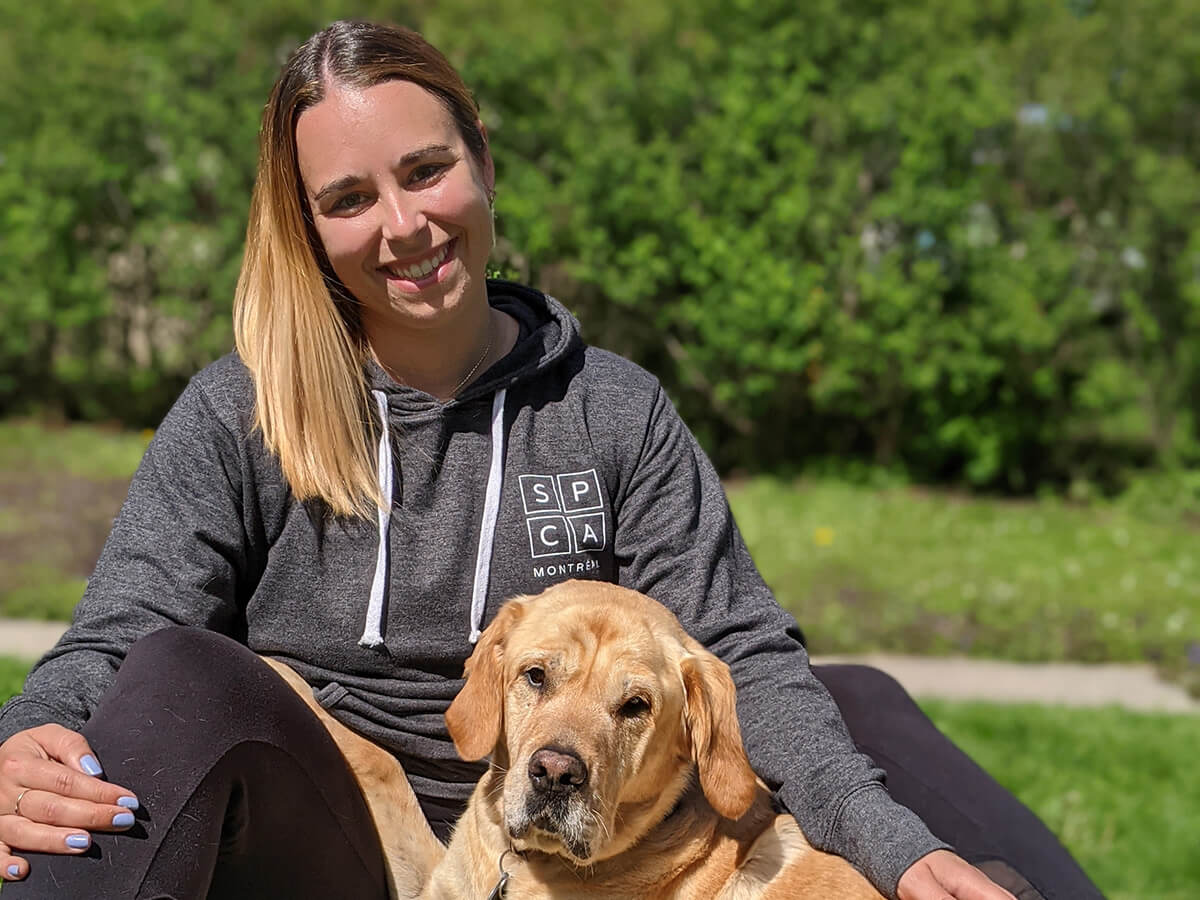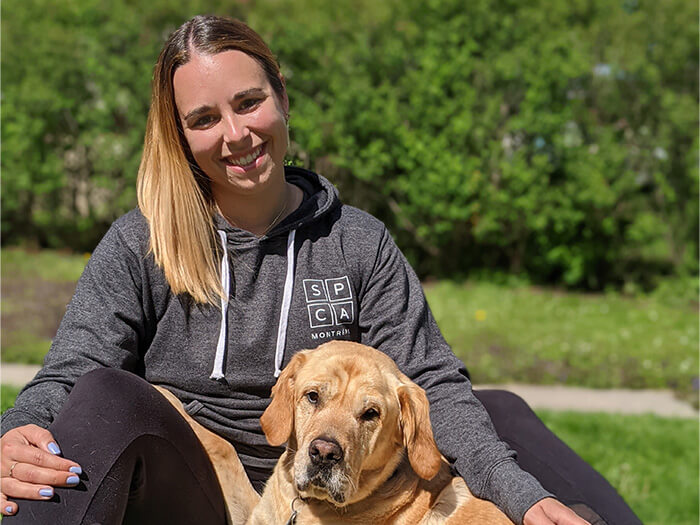
Considering becoming a pet owner? Read this first
 CPA Carole-Anne Des Ormeaux, finance director at the Montreal SPCA, with her dog Charlie (Image provided)
CPA Carole-Anne Des Ormeaux, finance director at the Montreal SPCA, with her dog Charlie (Image provided)
Canadians love pets. In 2020 alone, we spent more than $5.7 billion on our beloved animal companions, up from $5.4 billion in 2019. Fifty-eight per cent of Canadian households report being a pet parent to at least one dog or cat. And since the beginning of the pandemic, animal adoptions have been on the rise with waiting lists getting longer.
“In 2020, 3,357 animals were adopted. That’s almost 10 per day,” says CPA Carole-Anne Des Ormeaux, finance director at the Montreal SPCA and pet parent to Charlie, a mixed Labrador. “The average stay for animals at our shelter is very short: seven days for cats, 10 for dogs.”
If you’re looking to bring a pet home, here are some considerations to keep in mind.
1. CONSIDER ANNUAL COSTS
First, whether you choose to buy or adopt a pet, do your due diligence on the integrity of the adoption agency, breeder or pet store you are planning to use. Then factor in the cost of caring for the animal once it starts living in your home.
Here are some figures to consider, according to the Association des médecins vétérinaires du Québec (AMVQ).
- Dogs
The average yearly cost of maintaining a seven-kilogram adult dog—including a licence, vaccinations, medical care and food—is $2,380 before taxes. Additional accessories and supplies, such as grooming, toys and boarding, amount to about $572. This brings the total cost of owning a dog to nearly approximately $3,000 a year before taxes.
“If behavioural training is necessary,” adds Des Ormeaux, “expect to pay between $100 and $125 for private lessons.” - Cats
For an adult indoor cat, you need to plan for a medical exam, vaccines, internal and external parasite prevention, dental cleaning and X-rays, possibly a municipal licence, food, pet insurance, cat litter and screening and prevention costs based on medical needs. The total averages $2,019 (costs are a bit higher for an outdoor cat). For a kitten, plan to spend between $1,600 and $2,000, and for an older cat, closer to $2,700. - Other small animals
- For a rabbit, the average cost is $3 a day.
- For a Betta fish, sunk costs include an aquarium, filtration equipment, heater, etc., which collectively amount to around $200, plus up to $600 annually for food.
- For gerbils and hamsters, plan to spend at least $215 upfront, plus $180 for litter, bedding and food.
- For birds, budget $350 for the first year, then about $220 a year thereafter.
- For snakes, the cost can range from $400 to as much as $1,500 a year because they have high set-up costs and must live under very specific conditions.
2. FACTOR IN UNEXPECTED COSTS
CPA Diana Wren, manager, corporate financial planning, at the City of Brampton and pet parent to Niko, did not anticipate the number of treats they would have to try before finding the “doggy currency” that would motivate the pup to follow commands. “Unfortunately, he has expensive tastes and his favourite treat costs $25 dollars for a packet that lasts three weeks,” she says.
Also, given that Niko is a Daisy Dog—a small, shaggy breed—some extra expenses had to be factored in to maintain his hygiene, including baby wipes for his paws that are used almost daily and grooming. “Although we are experimenting with grooming him ourselves, his hair grows quite quickly, and it’s fluffy—which means he needs a cut every six weeks or so,” says Wren.
There are many other major expenditures to consider, such a vet bills, which can quickly and substantially increase the costs of a pet. However, one way to mitigate the unexpected costs of a major vet bill is through things like pet insurance.
For liability purposes, in addition to pet insurance, pet owners must notify their home insurance provider about the new family member, adds Des Ormeaux. “The premium could go up, for example, if you have a large snake that requires a terrarium with heat lamps or if you get a certain breed of dog,” she says.
Planning for the death of a pet is also essential. Not including the urn, cremation can cost between $100 and $500 ($40 to $250 for communal cremation), depending on the animal’s weight. For a burial, the cost can range up to $2,500.
3. MENTALLY PREPARE YOURSELF
The decision to become a pet owner is an important one that will not only affect your bank balance, but your lifestyle as well. For Wren, who has two young daughters, the preparation began months before Niko’s arrival.
“We started watching videos on YouTube, including how to train a new pup, read your dog’s behaviours and make homemade dog food,” she says. “The most surprising change has been our bedtime routine. We tend to go to bed when Niko does and at least I (as Dog Mom) wake up when he does as well.”
For those who adopted a dog during the pandemic, Des Ormeaux advises that they start socializing the pet now, before they have to return to their workplace. “Get someone else to look after your pet, even for a few hours a week, to avoid the time bomb of separation anxiety,” he says.
Wren agrees, adding that Niko is so used to being exclusively with the family during the pandemic that leaving the house makes him anxious. “We have started asking our parents to watch Niko for short periods to get him accustomed to being away from home,” she says.
All things considered, bringing an animal home requires careful consideration, says Des Ormeaux, so if you are unsure, volunteering to foster is always an option. But, for Wren, the love and companionship Niko has brought is beyond what she could have imagined.
“It’s only been about four months that Niko has been a part of our family, but we’re already at a point where we can’t imagine life without him,” she says.
READY FOR A PET?
To help children understand the responsibility and commitment of owning a pet, CPA Canada has developed a virtual “Pet Shop” session, as part of its virtual, interactive classroom workshops. You can also experience a sample live session by watching this video.
Plus, learn how bringing a pet to work can boost employee health and morale. And if pets aren’t allowed in your workplace, try therapy dog visits.